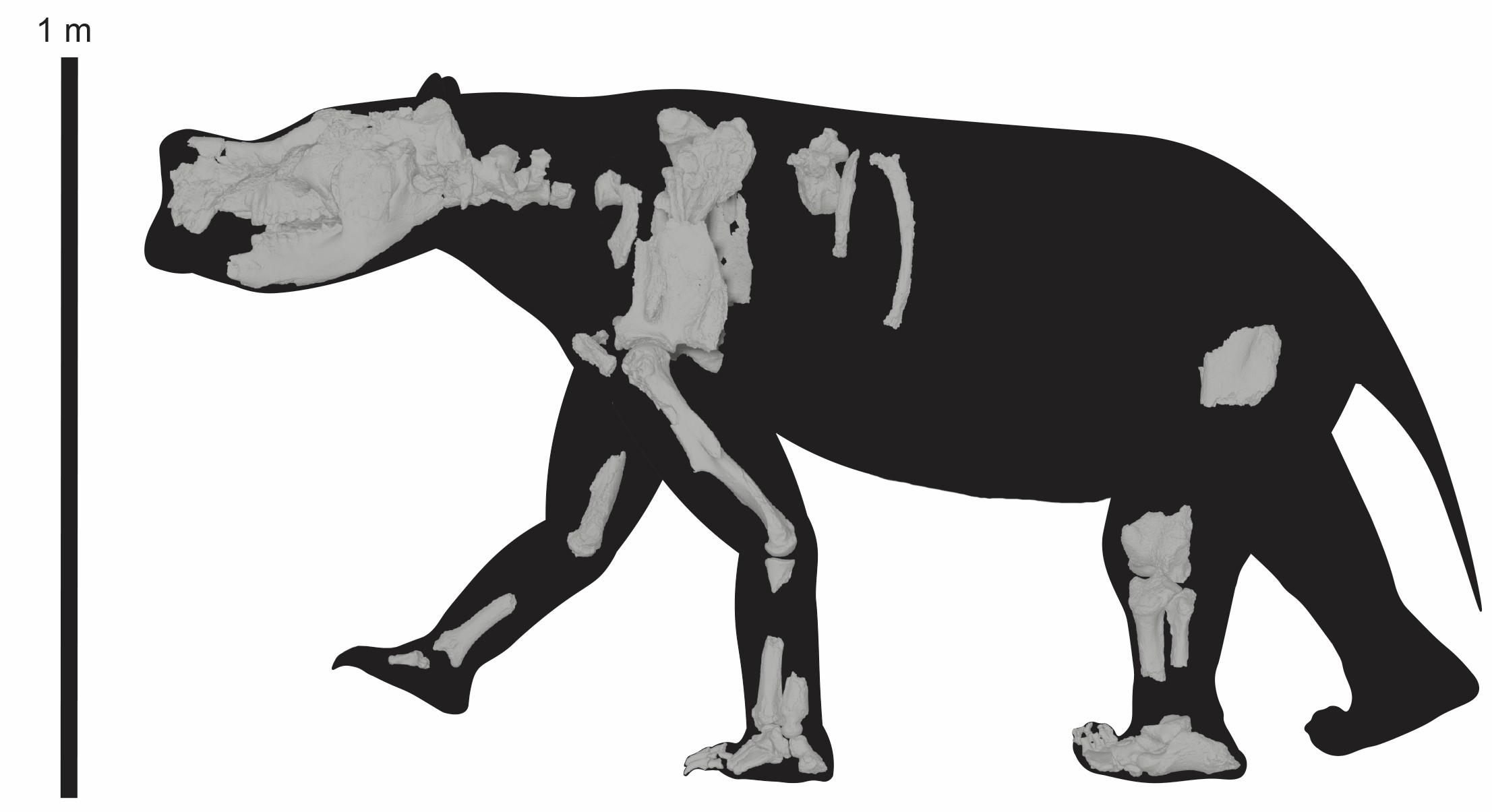
One of Australia’s first long-distance walkers has been described after Flinders University palaeontologists used advanced 3D scans and other technology to take a new look at the partial remains of a 3.5 million year old marsupial from central Australia.
They have named a new genus of diprotodontid Ambulator, meaning walker or wanderer, because the locomotory adaptations of the legs and feet of this quarter-tonne animal would have made it well suited to roam long distances in search of food and water when compared to earlier relatives.
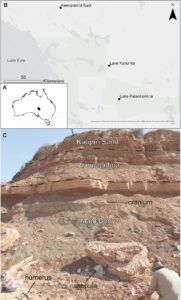 Researchers say the skeleton of Ambulator keanei, found on the Australian Wildlife Conservancy’s Kalamurina Station in northern South Australia by Flinders University researchers in 2017, belongs to a species in the family Diprotodontidae, a group of four-legged herbivores that were the largest marsupials to ever exist.
Researchers say the skeleton of Ambulator keanei, found on the Australian Wildlife Conservancy’s Kalamurina Station in northern South Australia by Flinders University researchers in 2017, belongs to a species in the family Diprotodontidae, a group of four-legged herbivores that were the largest marsupials to ever exist.
“Diprotodontids are distantly related to wombats – the same distance as kangaroos are to possums – so unfortunately there is nothing quite like them today. As a result, palaeontologists have had a hard time reconstructing their biology,” says Jacob van Zoelen, a PhD candidate at the Flinders University Palaeontology Laboratory.
The largest species, Diprotodon optatum, grew to the size of a car, weighing up to 2.7 tonnes. Diprotodontids were an integral part of Australian ecosystems until the last species became extinct about 40,000 years ago.
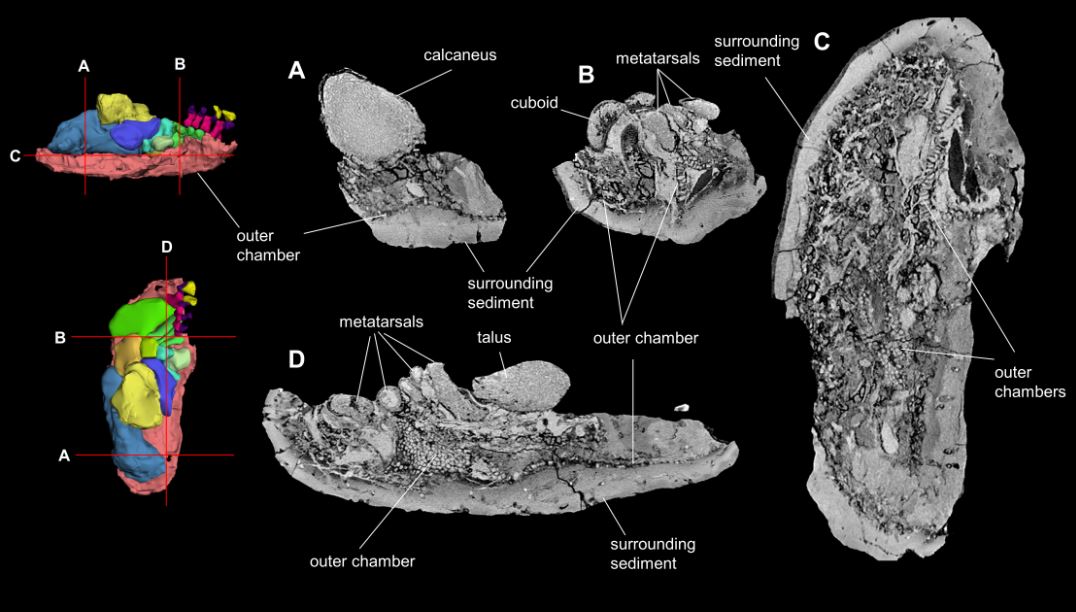 During the period when Ambulator keanei was alive (the Pliocene), there was an increase in grasslands and open habitat as Australia became drier. Diprotodontids likely had to travel much greater distances to obtain enough food and water to keep them going.
During the period when Ambulator keanei was alive (the Pliocene), there was an increase in grasslands and open habitat as Australia became drier. Diprotodontids likely had to travel much greater distances to obtain enough food and water to keep them going.
“We don’t often think of walking as a special skill but when you’re big any movement can be energetically costly so efficiency is key,” says Mr van Zoelen.
“Most large herbivores today such as elephants and rhinoceroses are digitigrade, meaning they walk on the tips of their toes with their heel not touching the ground.
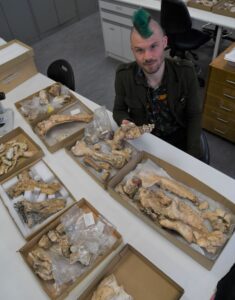
“Diprotodontids are what we call plantigrade, meaning their heel-bone (calcaneus) contacts the ground when they walk, similar to what humans do. This stance helps distribute weight when walking but uses more energy for other activities such as running.”
Diprotodontids display extreme plantigrady in their hands as well, by modifying a bone of the wrist, the pisiform, into a secondary heel, Mr van Zoelen explains.
This ‘heeled hand’ made early reconstructions of these animals look bizarre and awkward, he says.
“Development of the wrist and ankle for weight-bearing meant that the digits became essentially functionless and likely did not make contact with the ground while walking. This may be why no finger or toe impressions are observed in the trackways of diprotodontids.
“So, diprotodontids such as Ambulator may have evolved this morphology to traverse great distances more efficiently. This morphology also allowed for greater weight to be supported, allowing diprotodontids to get very big indeed.
“Eventually, this led to the evolution of the giant and relatively well-known Diprotodon.”
Most studies on the group have focused on the skull, as associated skeletons are rare in the fossil record. As such, the newly described skeleton is of great importance and is even more special as it is the first to be found with associated soft tissue structures.

Using 3D-scanning technology, the Flinders team was able to compare the partial skeleton with other diprotodontid material from collections all over the world.
Encasing the foot of the individual was a hard concretion that formed shortly after death. By CT scanning the specimen, soft tissue impressions preserving the outline of the footpad were revealed.
The specimen was 3D-scanned and the files are now freely available for anyone to download and look at online . They will also be included in the new Virtual Australian Museum of Palaeontology (VAMP), to be launched for public access by Flinders Palaeontology researchers and associates in June 2023.
The new article, Redescription of the Pliocene marsupial Ambulator keanei comb. nov. (Diprotodontidae) from inland Australia and its locomotory adaptations (2023) by Jacob D van Zoelen, Aaron B Camens, Trevor H Worthy and Gavin J Prideaux has been published in the Journal of Royal Society Open Science DOI: 10.1098/rsos.230211
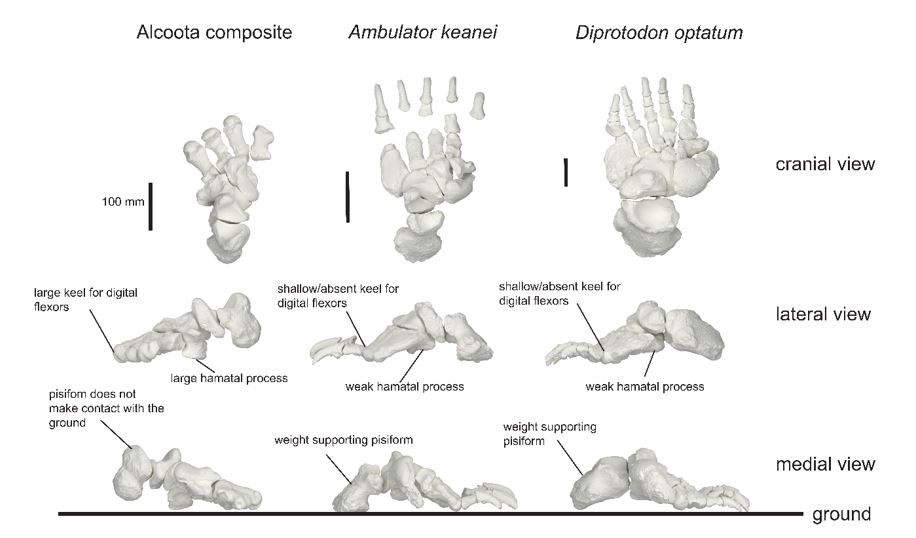 Acknowledgements: This research was funded by the Australian Government Research Training Program Scholarship (Excellence). Travel to collections was partially funded by the Royal Society of South Australia small grant scheme 2018, the University of California Museum of Palaeontology Doris O. and Samuel P. Welles Fund 2019, Flinders University Higher Degree Research International Conference Travel Grant 2019 and the North American Palaeontology Conference Student Travel Grant. For assistance in the field at Kalamurina Station, we thank Tess McLaren and Keith Bellchambers from the Australian Wildlife Conservancy.
Acknowledgements: This research was funded by the Australian Government Research Training Program Scholarship (Excellence). Travel to collections was partially funded by the Royal Society of South Australia small grant scheme 2018, the University of California Museum of Palaeontology Doris O. and Samuel P. Welles Fund 2019, Flinders University Higher Degree Research International Conference Travel Grant 2019 and the North American Palaeontology Conference Student Travel Grant. For assistance in the field at Kalamurina Station, we thank Tess McLaren and Keith Bellchambers from the Australian Wildlife Conservancy.
Read more in The Conversation: Newly described enormous marsupial wandered great distances across Australia 3.5 million years ago

